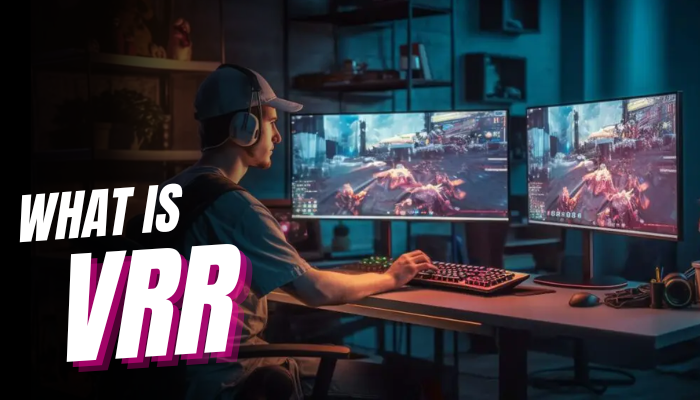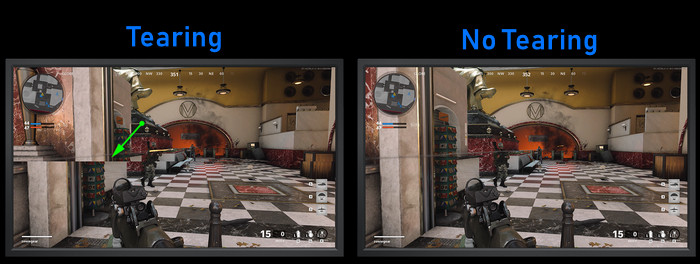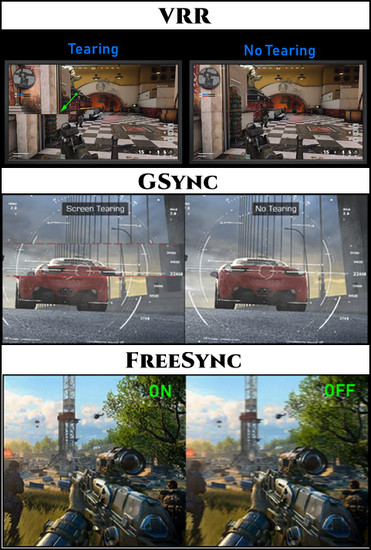The VRR- Variable Refresh Rate offers better sync between your game FPS and your monitors Refresh Rate.
Lets get to know about VRR & how it actually works or whether you need it.
What is VRR?

& How Does it Work?
In short, VRR means monitorrefresh rate = FPS(Frames Per Second) in real-time.
Technically it is a fixed sweet point between Hertz & FPS.

Now the VRR thing.
Unlike the V-Sync, it doesnt deal with FPS; it controls the Refresh rate(Hz) instead.
But it doesnt limit the Hz at a fixed point either.

It continuously fluctuates the refresh rate to match the Games FPS.
A proprietary example might clear every bit of doubt in this case.
Imagine owning anASUS PG65model 65 monitor with a120Hzrefresh rate and playing Cyberpunk 2077 on a 4080 Ti GPU.
Youll get a Frames count of around70FPS.
But is your monitor going to climb down to70Hz?
Even if it does, would it always match your fluctuating gaming FPS?
Here is whereVRRcomes in.
It detects your gaming FPS and dynamically matches therefresh rate with FPS.
It will always match whichever FPS your game is currently showing.
Then why would we need this VRR on our monitor?
We noticescreen stuttering, tearing, and flickering when the FPS cant match the monitor refresh rate.
The VRR-enabled monitors solve this by adjusting the refresh rate(Hz) simultaneously.
Are VRR, GSync, and FreeSync all the Same?
Modern monitors come with the GSync & FreeSync technology packed in.
These are some common terminologies we hear when we buy a monitor.
I call these FreeSync & GSync a wrapped-up VRR version, which isnt entirely correct.
I said it because all of these serve the same purpose.
The GSync comes with Nvidia GPUs and the FreeSync from AMD.
Though theFreeSync works with both Nvidia & AMD, the GSync is limited to Nvidia graphics cards.
In fact, Gsync claims it can ultimately prevent screen tearing & stuttering, whereas FreeSync only reduces it.
Its pretty funny we didnt really notice any significant difference between these two technologies in our test.
But there is a difference between VRR against GSync & FreeSync, which is the LFC.
TheLFCstands forLow Frame Rate Compensation.
And the LFC is required with FreeSync & GSync but not for VRR.
Youll find all of these answers in a different section.
How Does the LFC Work?
In that case, the minimum Hertz limit is 30 Hertz; what will happen then?
The LFC technology will double the refresh rate instead of matching the Hertz with FPS.
Similarly, LFC will set 50Hz for 25 FPS, 30Hz for 15FPS, and 56Hz for 28FPS.
It will retain one frame twice as long to provide a seamless, stutter-free experience.
FYI the LFC is controlled by the source, not by the monitor or screen.
FAQs
How do I know if my TV has VRR?
What is the VRR limit?
The lowest & highest VRR Hertz limit is 30 Hertz through 144 Hertz.
The below and above refresh rate is covered with LFC.
Can an Old GPU support VRR or FreeSync?
Does PS5 have features like GSync & FreeSync?
Yes, the PlayStations support VRR technology instead of the GSync & FreeSync.
Its a worthy feature for charm-loving gamers.